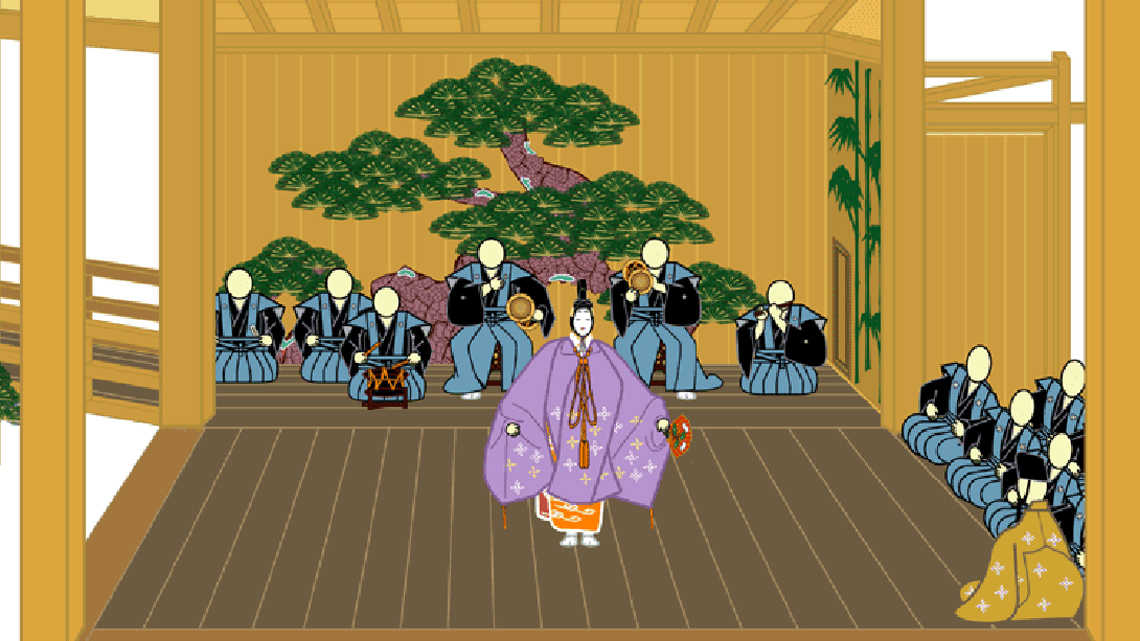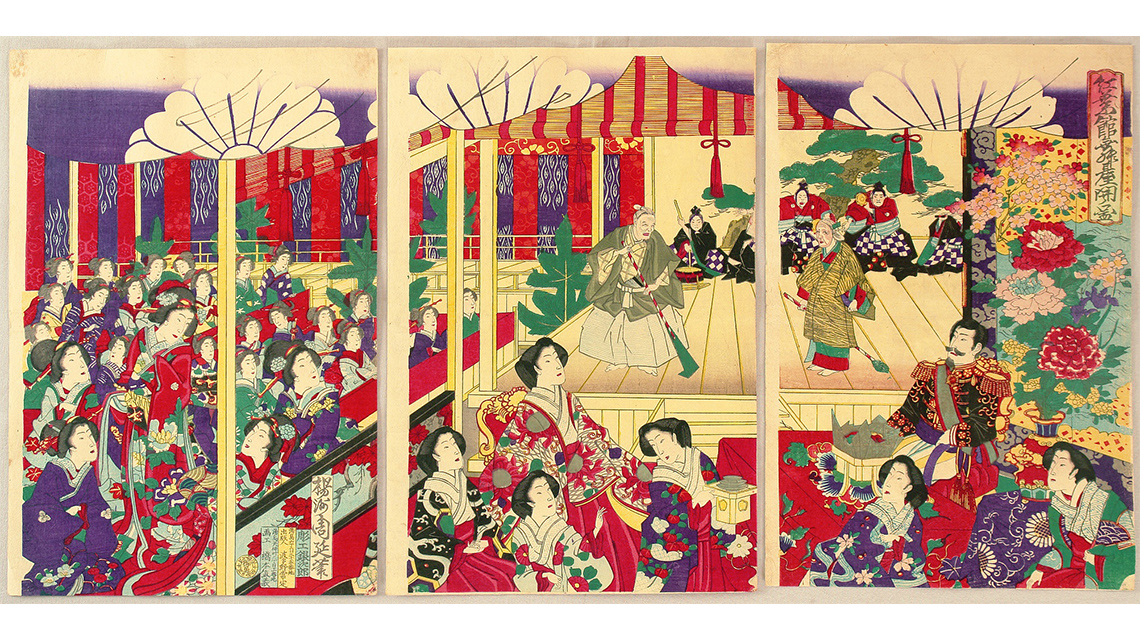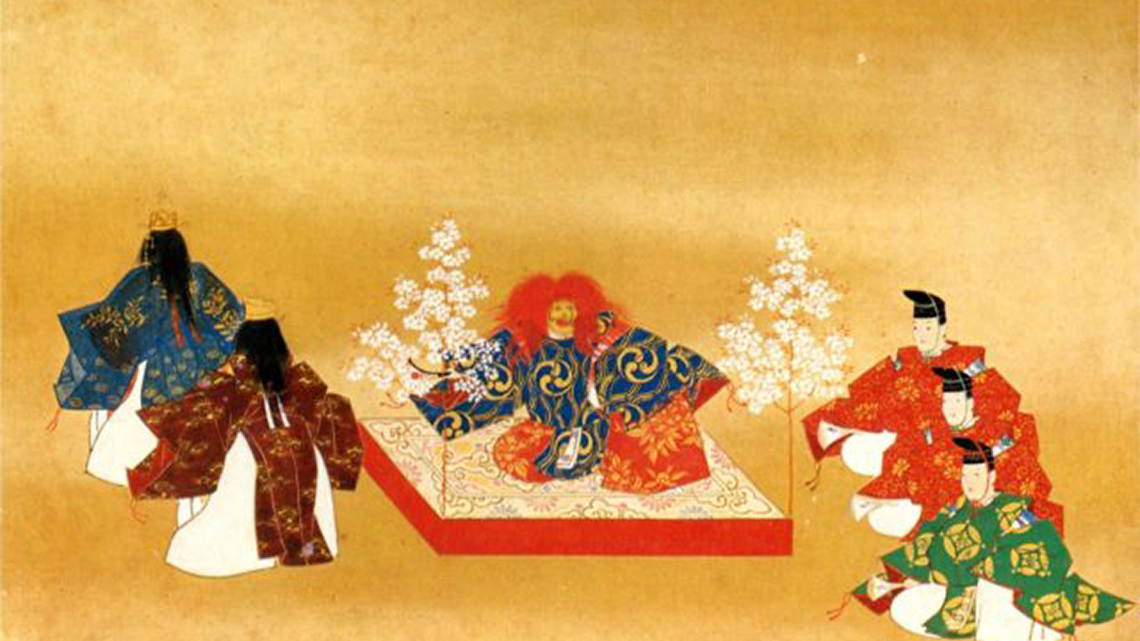Minds On
Today’s vocabulary
Press the following tabs to access today’s vocabulary.
Let’s get started!
In most early societies around the world, music was an important part of life. Each society used music in their own distinct way with different sounds and different instruments.
Investigate
Investigate
In this learning activity, we are going to investigate a specific form of musical theatre in early Japanese society and how it has evolved today.
As you explore the following pictures, ask yourself:
- What early society might this be?
- Where is it located?
- In these images what instruments are being shown?
- What do you notice about the performances?
Record your ideas in a method of your choice.
A carousel of three images. Image 1: An artist’s representation of a Japanese Noh musical form. A performer is on a stage with supporting players to the back and side of the stage. The musicians are holding a variety of drums and one musician is playing a flute. Image 2: In this image, there are two performers on the stage holding brooms. There are musicians sitting at the back of the stage with drums in front of them. One of the musicians is playing a flute. There are many people in rows, viewing the performance. Beside the stage there is an emperor and others sitting with them in their own section. Image 3: This image has five performers moving around a small stage together and one performer kneeling on a small stage that has two trees in the corners of the stage.
Now that we have explored images from this early society, let’s find out what society is being represented and where it is on a map of the world.

A world map that shows North and South America, Europe, Africa, all of Asia (Central, north, south and east), the Middle East, and Oceana. The map also shows the North Atlantic, Pacific, South Atlantic, Indian, and the Pacific Oceans. Japan in indicated by an arrow on the map and is an island country in East Asia.
- What do you already know about this early Japanese society?
- What do you wonder about this society?
Record your thoughts in a method of your choice. If possible, share your thoughts with a partner.
Action
Get ready, get set…
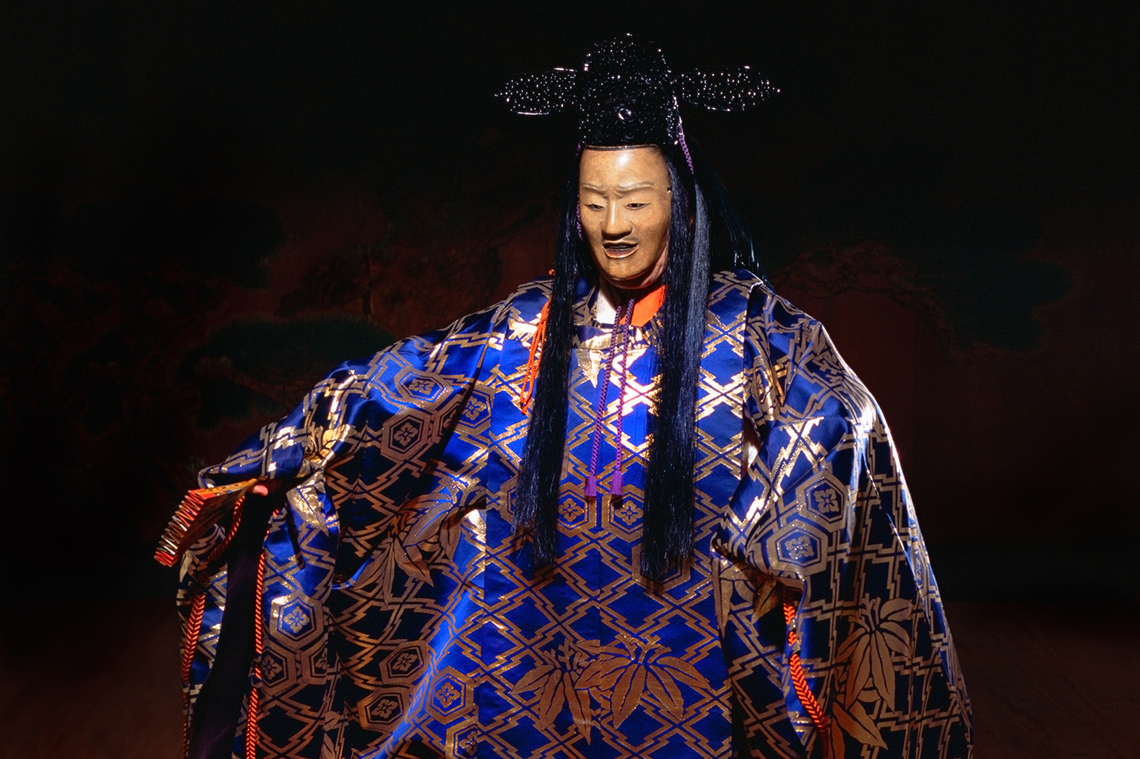
Every society has distinct musical characteristics, traditions, and musical forms that make them stand out from one another.
Let’s explore the culture and musical history of early Japanese society.
Early Japanese society
Press the following tabs to access information about music in early Japanese society.
Many elements of early Japanese music were taken and transformed from other countries, such as China and some European countries. After the 11th century, Japanese music began to evolve on its own.
Japanese theatre became important to society in the 1300s. These theatre performances took place outside of the Imperial courts, which is where the emperor (the ruler), their family, and the people who worked for the emperor lived.
One of the most popular types of theatre performance was Noh.
Noh is the oldest surviving form of Japanese theatre. It is a theatre performance that uses a combination of dance and music. The music includes singing and musical accompaniment.
In early Japanese society, the music, dancing, and acting communicated themes from their Buddhist religion or retold well known Japanese stories that showed very strong emotions. It was a form of entertainment for the Emperor and community members who were able to experience a performance.
Early Japanese Noh theatre was and still is made up of these characteristics:
Musical Accompaniment: the music combines flute and percussion instruments throughout the performance as accompaniment. This music and the chorus provide the accompaniment for a Noh performance. The music is present throughout the whole play.
Musicians: in Japanese Noh theatre, there are usually a small group of musicians who are at the rear of the stage. Most of these musicians play Japanese Drums (called Taiko) and one musician plays a flute. The drums give a hollow thud while the flute has an eerie whistling sound. This eerie whisper is what draws the first actor out onto the stage and creates the mood for the performance.
Blank Spaces: Noh music uses blank spaces in the pieces. It is these quiet spots between the notes that makes the music so dramatic. They are like the heartbeat of the music. These quiet blank spots create tension. There is a sense of relief when an instrument plays again.
Chorus: a chorus includes a small group of singers that sit on the side of the stage and sing throughout the performance. The Chorus often echoes the words of the characters or speaks for the character.
Explore a few moments of a Japanese Noh theatre performance.
Access this video entitled “Kashu-Juku Noh Theatre” to learn more about ancient form of Japanese Musical Theatre.
What musical accompaniment was clear in this short clip?
Record your answer in a method of your choice.
Press ‘Accompaniment’ to access possible answers.
singing, drumming, and a flute sound
Instruments used in Japanese Noh theatre
The following images and descriptions are the musical accompaniments for Noh theatre performances.
Press the following tabs to access images and descriptions that are the musical accompaniments for Noh theatre performances.
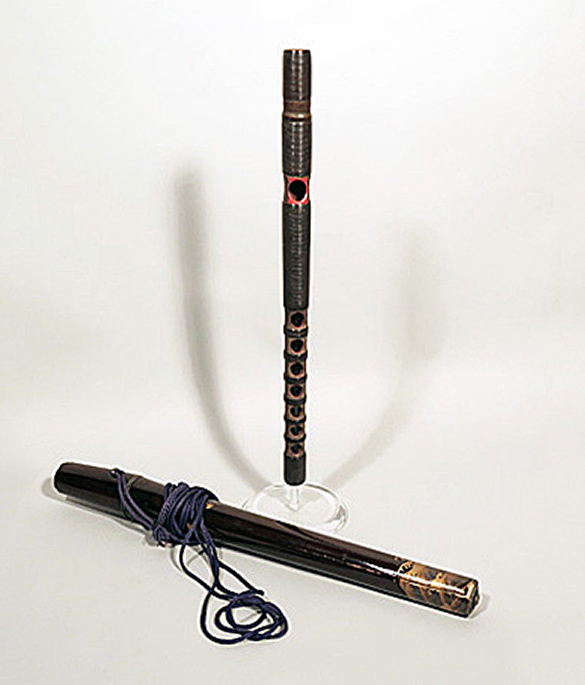
The Nokan or Fue is a bamboo flute with 7 finger holes. There is a hole along the top of the instrument and it is played by blowing across the hole.
This flute has a long neck with a hole in the top section for a musician to blow over. There are seven finger holes. It is bound with thin lacquered strips of twisted cherry bark.
Check out this video entitled “Japanese flute sound” to explore the Nokan.
Japanese flute sound
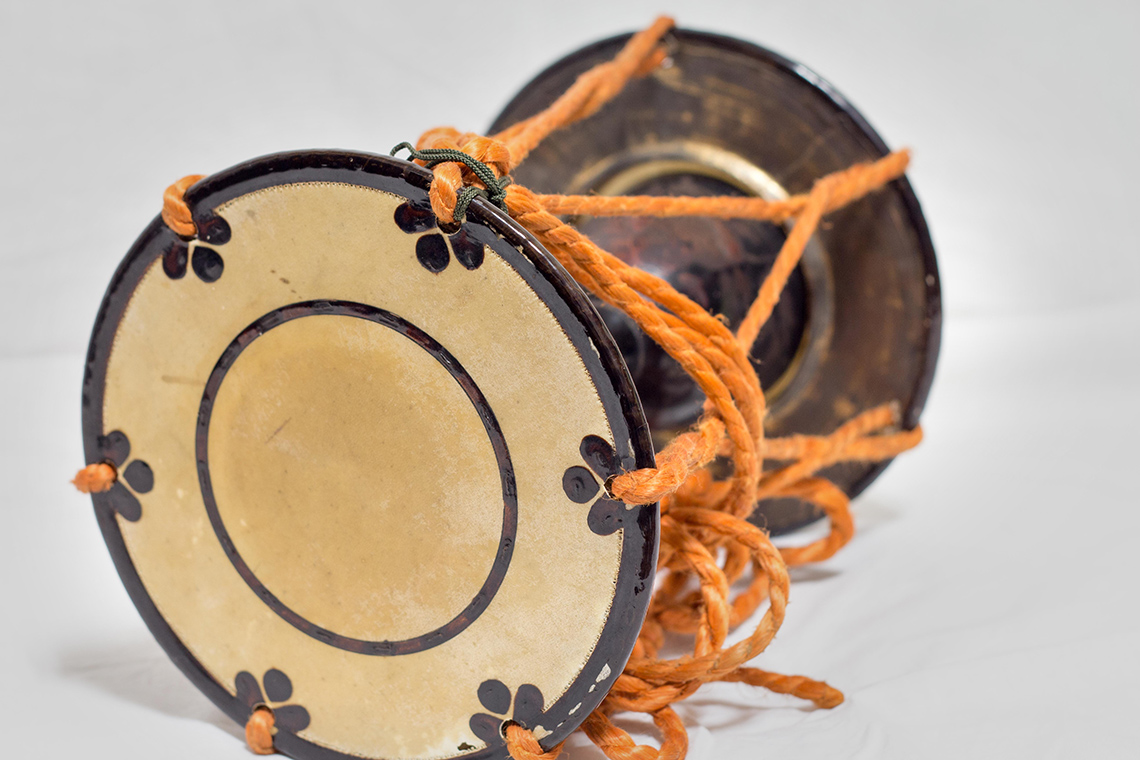
Kotsuzumi is a double headed hourglass shaped drum that is played with fingers.
This drum has a flat head at both ends with an hourglass shaped stem holding the two ends together. There is rope attached to the drum on both ends.
Check out this video entitled “Ōkura Shōnosuke’s Beat of Life” to learn more about the Kotsuzumi drum.
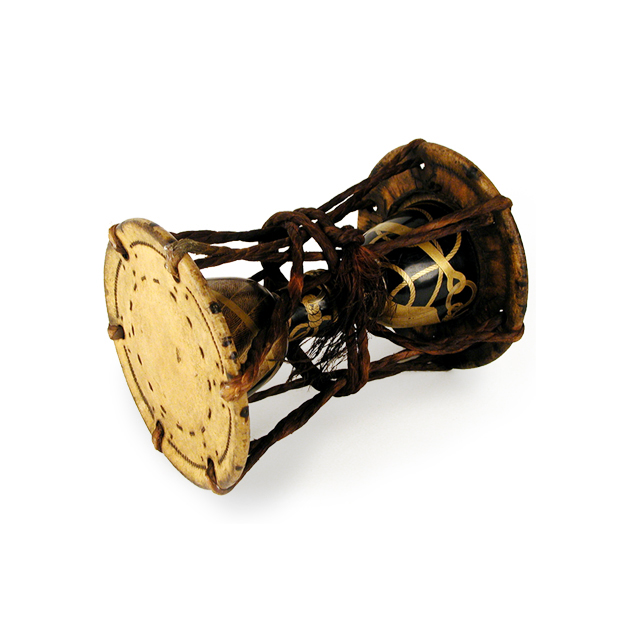
Otsuzui is a hip drum which is similar to the Kotsuzumi but larger. It is also hour class shaped and specially decorated.
This drum has a flat head at both ends with an hourglass shaped stem holding the two ends together. There is rope attached to the drum on both ends. It is very similar to a Kotsuzumi but larger.
Check out this video entitled “Ji-uchi Taiko Drills for Shime Daiko” to learn more about Otsuzui drum.
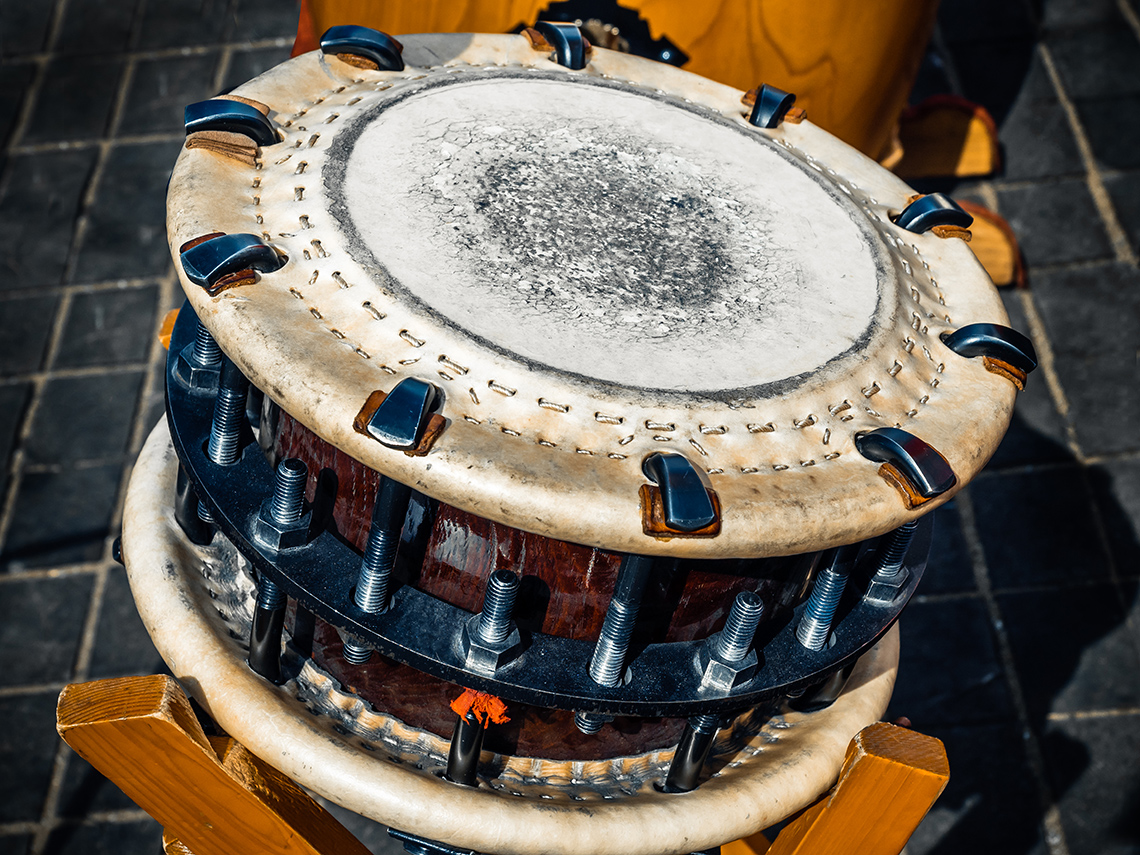
The Shime-daiko is a small Japanese drum with a short but wide body. It has heads at both ends of the drum that are bound together with cords. It is struck with sticks as it sits in a stand.
This is a small Japanese drum with a short but wide body. It has heads at both ends of the drum that are bound together with cords. It is struck with sticks as it sits in a stand.
Explore the following video entitled “OH-TSUZUMI” to learn more about Taiko drummers.
Test your skills!
Use your learning to answer the following true/false questions about early Japanese society and the importance of music to that society.
Select the correct answer, then press ‘Check Answer’ to see how you did.
Go!
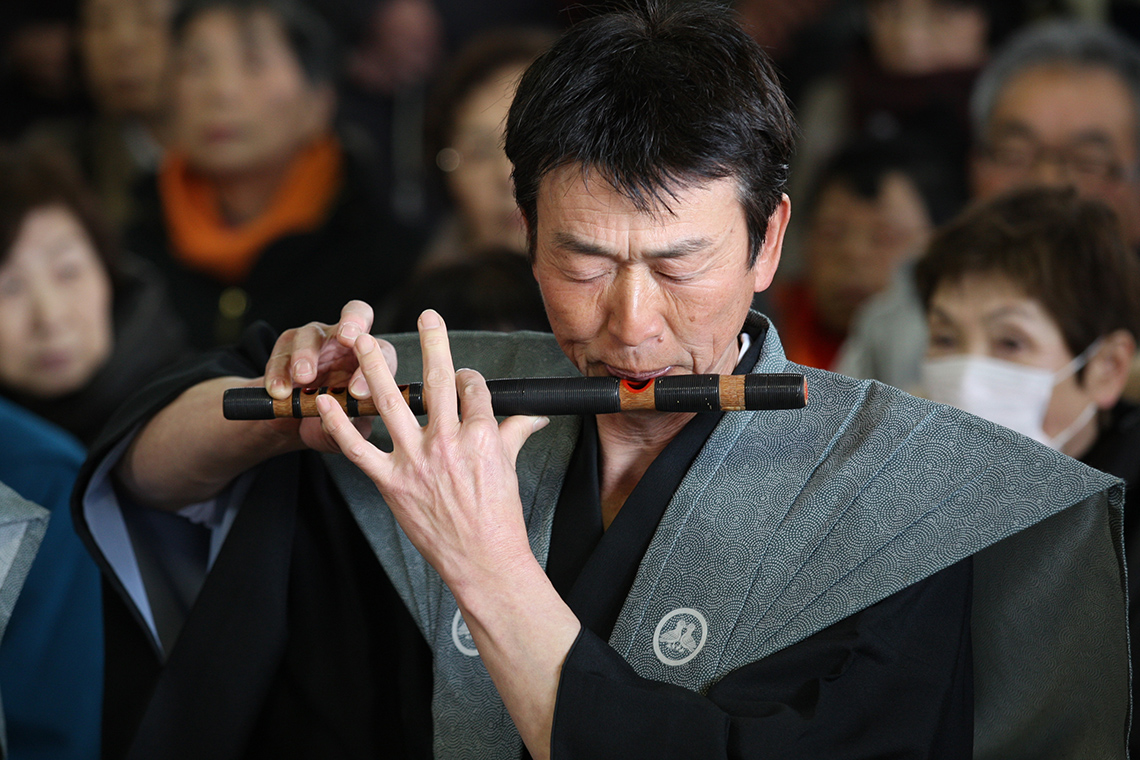
As you explore the music that was associated with early Japanese Noh theatre, reflect on the following questions.
- What stands out to you in the piece?
- What do you notice?
Throughout this section, you may record your thoughts using a method of your choice.
Ancient Japan
Access the following video clip entitled “Niigata” to explore Japanese Hayashi music from the Noh theatre.
Test Your Skills
Record your observations
- What is unique about the music in these performances?
- How are the instruments being played?
- How did this performance make you feel?
Record your ideas in a notebook or a method of your choice.
Japanese Noh theatre today
Japanese Noh theatre in the past was performed outdoors, but now the most common place to explore Noh is on stage in modern theatres. The instruments remain the same, but the instruments used are sometimes made from new materials to improve the sound.
These days, a typical Noh program is not as long as the traditional performances. Though the plays may be shorter, and the plays can be enjoyed indoors, audiences really like to enjoy Noh in its traditional form and appreciate it as a stage art with early traditions.
Consolidation
Putting it all together
How would you describe this clip for someone who does not know about Japanese Noh theatre?
For the following clip called ‘Noh Shojo’, you will create a description that will help to explain the unique characteristics of the music in Japanese Noh Theatre as well as any other information that could help someone understand this unique music style.
Record your ideas in a notebook or in a method of your choice. You may also choose to give an oral recording of your description.
Access this video entitled “Noh Shojo” to learn more.
Use the following checklist to be sure you include information from the learning activity in your description.
Did I:
Reflection
How do you feel about what you have learned in this activity? Which of the next four sentences best matches how you are feeling about your learning? Press the button that is beside this sentence.
I feel…
Now, record your ideas about your feelings using a voice recorder, speech-to-text, or writing tool.
